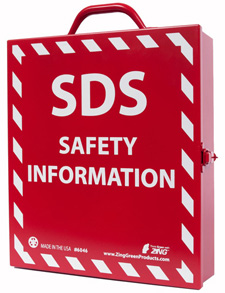| The Home page of ILPI's Safety Data Sheet (SDS) Resource, the leader in SDS information since 1995! | |
| The history and philosophy behind this resource. | |
| A curated collection of books and reference materials concerning Safety Data Sheets and closely related topics. | |
| Paste your plain text SDS into the SDS-Demystifier, and it will be converted into a hypertext-enriched document with links to detailed explanations of each key term. | |
| An extensive list of frequently asked questions about Safety Data Sheets including regulations, content, compliance, and more. | |
| A humorous take on Safety Data Sheet jargon. Fill in the blanks on our entry form to generate a personalized Unsafety Data Sheet to share with your coworkers. | |
| Since 1995, we've maintained this massive curated list of the best places to find Safety Data Sheets on the Internet. | |
| Way more than a glossary, this hypertext-enhanced resource covers hundreds of SDS-related terms and expert knowledge. Each entry includes both the SDS relevance and links to additional authoritative resources. | |
| Archived results of Safety Data Sheet related polls taken by some of our millions of site visitors | |
| You are here! The OSHA regulations behind SDS regulations, including the inspection guidelines and over 400 official interpretations letters under the Hazard Communication Standard | |
| Commercial suppliers of SDS authoring and management software as well as cloud compliance services. | |
| Commercial companies that will create SDS's for your specific needs as well as SDS translation companies. |

Safety signs, banners, and scoreboards? Get yours at Safety Emporium!
| Title: 03/04/1986 - Classification of foundry products such as castings in relation to the HCS. | |
| Record Type: Interpretation | Standard Number: 1910.1200 |
March 4, 1986
The Honorable Dan Quayle
United States Senate
Washington, D.C. 20510
Dear Senator Quayle:
This is in response to your letter dated January 24 on behalf of your constituents, Messrs. Donald W. Dreitzler of Sterling Casting Corporation and L. W. Essex of Essex Castings, Inc., regarding the Occupational Safety and Health Administration's (OSHA) Hazard Communication Standard (HCS).
Promulgation of the HCS on November 25,1983, was the culmination of over 10 years of rulemaking activity by the Agency. The standard is based on the premise that employees have a right to know the identities and hazards of the substances to which they may be exposed in their place of employment. This knowledge will ultimately result in a reduction in the occurrence of illnesses and injuries resulting from such exposures.
Your constituent expressed concern about the classification of foundry products such as castings in relation to the HCS. In many situations, a casting would be considered an "article" under the HCS and would be exempt from the provisions of the standard. However, if the casting is going to another manufacturing facility where it will be used in such a way as to release a hazardous chemical, information will have to be provided to the manufacturing purchaser of the product in accordance with the standard. OSHA has never made a blanket interpretation that all foundry castings are covered by the standard. The HCS requires manufacturers of such products to make the determination as to whether the casting is exempt based upon its "normal conditions of use."
It is unfortunate that inaccurate information has been disseminated about the HCS. Many industry representatives participated in the development of this rule, and there was substantial industry support for its promulgation. The rule is performance-oriented, incorporating the flexible approaches industry has long encouraged in OSHA standards. A two-year phase-in period for the requirements was also established to allow all employers sufficient time to come into compliance. We believe that the rule is neither unworkable nor unreasonable. It is impossible, however, to anticipate all of the problems that may arise in the many diverse industries covered by this generic approach, but we are attempting to deal with such situations as they are brought to our attention. These resolutions can only be based on considerations of factual information regarding the problem, and must result in employees receiving the information to which they are entitled under the rule.
I hope this information will help to clarify the HCS and its requirements. If you have any further questions, please do not hesitate to contact us.
Sincerely,
John B. Miles, Jr., Director
Directorate of Field Operations

Your employees can stay informed and safety-ready with right to know stations and labels from Safety Emporium.

Your employees can stay informed and comply with OSHA regulations with SDS information stations and compliance products from Safety Emporium.
The original official public domain version of this document is available from OSHA at https://www.osha.gov/laws-regs/standardinterpretations/1986-03-04.